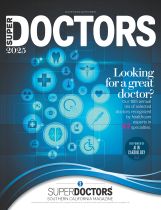Healthcare Association of New York State
Press Releases (HANYS)
November 7, 2013
The Healthcare Association of New York State (HANYS) issued a unique report that evaluates ten prominent government, not-for-profit, and for-profit hospital report cards. HANYS' review found a wide variation in the methodologies and results.
"Patients, policymakers and practitioners all agree that reliable, accurate, and consistent quality measures are essential elements in improving health care services," HANYS' President Dennis Whalen said. "However, more and more organizations are entering the quality measurement field, generating a proliferation of varied scoring that instead of assisting patients and providers in evaluating health care quality, serves more to bewilder them."
Currently, multiple organizations issue grades or report cards on hospital performance. Each uses a different approach, generating varied scores for the same hospital, leaving it unclear to the public what scores, if any, are accurate indicators of performance.
Hospitals often use external reports as tools to measure their performance and aid in ongoing quality improvement efforts. However, these reports are often difficult to replicate and incorporate into internal hospital quality improvement efforts due to the wide variation of scores and methodologies. As a result, managing the influx of conflicting quality information can drain limited hospital staff time and financial resources.
"What hospitals and patients need and deserve is a standardized, accurate, clinically-based method of measuring and comparing hospital quality," Mr. Whalen said. "This report provides a critically needed analysis that we hope will help hospitals to evaluate the usefullness of these report cards and stimulate a broader discussion."
The complete report is available at www.hanys.org/report-cards/.
"We welcome the insight and clarity that HANYS' Report on Report Cards brings to all patients and providers," said Martha Radford, M.D., Chief Quality Officer at NYU Langone Medical Center. "Defining the criteria for a reliable report card benefits everyone who cares about the quality of health care."
"The variety of scores published by these report cards is confusing, not empowering, for patients seeking care," said David Evelyn, M.D., Vice President for Medical Affairs at Cayuga Hospital. "Patients see the same hospital get a B in one report, and a check in one report, and a semicircle in a third report, and wonder what it means. This report showcases the widespread confusion, and helps us focus on the report cards that are most reliable."
"The low-scoring proprietary report cards were developed over a decade ago to fill a gap in public reporting of hospital performance," said Robert Panzer, M.D., Associate Vice President of Patient Care Quality and Safety at University of Rochester Medical Center. "Today federal and state governments produce high-quality report cards that fill that gap, making those others with weak methods unnecessary and at times harmful as they distract from important work to improve care."
The report evaluates ten prominent hospital report cards:
- The Joint Commission Quality Check;
- New York State Department of Health Hospital-Acquired Infections Report;
- Centers for Medicare and Medicaid Services (CMS) Hospital Compare;
- New York State Department of Health Hospital Profile Quality Section;
- Niagara Health Quality Coalition New York State Hospital Report Card;
- Consumer Reports Hospital Safety Rankings;
- Leapfrog Group Hospital Safety Score;
- Truven Health Analytics 100 Top Hospitals;
- Healthgrades America's Best Hospitals; and
- U.S. News and World Report Best Hospital Rankings.
Each report is scored on the following criteria:
- Transparent Methodology: The complete methodology is available, enabling hospitals to replicate the results and analyze the data internally.
- Evidence-Based Measures: The measures used are rooted in science and supported by peer reviewed literature.
- Measure Alignment: The quality measures are approved by the National Quality Forum (NQF) and the Measure Application Partnership (MAP), and/or aligned with the Centers for Medicare and Medicaid Services (CMS) or other national government-based or accrediting organizations.
- Appropriate Data Source: Evidence-based clinical data obtained through medical chart abstraction or from a national quality performance registry is used, instead of administrative data.
- Most Current Data: The data used to generate the report is no more than one year old from the release of the report publication.
- Risk-Adjusted Data: A statistical model is applied to the data that adjusts for significant differences in patient illness severity, demographic factors, and other factors that impact patient outcomes. The risk adjustment must be transparent.
- Data Quality: The data have undergone quality and integrity edits to correct for errors in the source file and eliminate outliers that can skew the data results.
- Consistent Data: Comparative data points are gathered from the same sources and timeframes.
- Hospital Preview: The report card organization allows hospitals to review the report prior to its release to correct potential errors.

